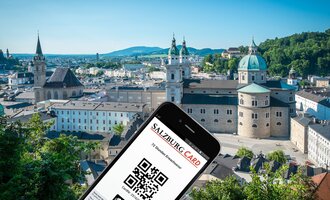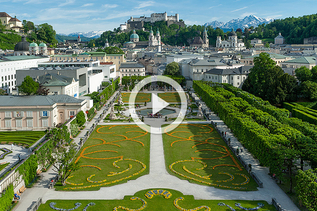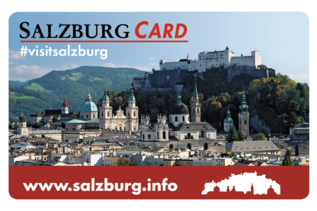
Kajetanerkirche - Cajetan Church
The Cajetan Church – or Kajetanerkirche – stands on the square of the same name in the Kaiviertel section of Salzburg. It looks back on a long and storied history. Even Paracelsus is associated with the church, while its interior is home to a surprising treasure: the Sacred Stairway or Scala Santa.
A unique feature of the Cajetan Church is the Sacred Stairway, built in 1712 in imitation of the Scala Santa in Rome. Worshippers may only ascend this staircase on their knees, a practice that evokes a common expression of piety during the Baroque era. Just like its role model in Rome, crosses were installed on the 2nd, 11th and 28th steps, symbolizing the drops of blood shed by Jesus Christ. The cross on the 2nd step has unfortunately been lost, only the empty casing still remaining. This stairway actually represents a particular honor bestowed upon Salzburg, since it is not merely a replica. Rather, it is an off-shoot of the original that is equally as holy. The stairs are open every Saturday from 11 a.m. to noon.
In 1591, Prince Archbishop Wolf Dietrich purchased an infirmary along with a church, in order to found a theological seminary that would be run by the Theatine (Cajetan) Order. The church was not completed until 1696 under the reign of Archbishop Johann Ernst von Thun, finally consecrated in the year 1700. When the Salzburg chapter of the Theatine Order was dissolved in 1809, the Cajetan Church also came precariously close to falling into decay. In 1923, the church and the monastery were transferred to the Order of the Brothers of Mercy, who made every effort to ensure that the church was maintained and rehabilitated. During the Second World War, the building served as a military hospital and was damaged in a bombing raid. However, it was subsequently restored.
Construction of the Cajetan Church also heralded the arrival of the Italian Baroque in Salzburg. The broad, palatial façade treats the church and monastery as a unified architectural complex. It also features a mighty oblique-oval dome which underscores the sacred character of the building.
Thanks to the stuccowork, the church interior has a festive, stately and pure appearance. The dome, which permits abundant natural lighting, dominates the space. Built into the gallery above the atrium is the oldest preserved organ in Salzburg, made in 1700 by Christoph Egedacher.
Mass: daily 6 pm
No visits during mass!
Links
Impressions
Contact
Kajetanerplatz 1
5020 Salzburg













